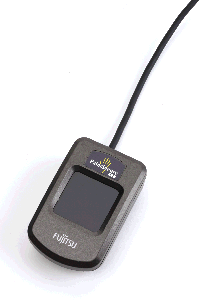Palm Reading
 First commercially introduced in Japan in 2004, the Fujitsu PalmSecure palm vein reader is starting to find customers in the US, especially in the healthcare sector, where it is being used to check people into clinics. Healthcare providers report that the contactless aspect of the device makes it more hygienic than fingerprint scanners, says Jim Preasmyer, director of sales and business development for the Advanced Technology Group of Fujitsu Frontech North America.
First commercially introduced in Japan in 2004, the Fujitsu PalmSecure palm vein reader is starting to find customers in the US, especially in the healthcare sector, where it is being used to check people into clinics. Healthcare providers report that the contactless aspect of the device makes it more hygienic than fingerprint scanners, says Jim Preasmyer, director of sales and business development for the Advanced Technology Group of Fujitsu Frontech North America.
Because palm veins lie beneath the body surface, they are difficult to forge, according to the company. They also are less affected by temperature and other external impacts, compared to fingerprints. PalmSecure’s 1 inch by 1 inch cube uses a near-infrared light to capture a person’s palm vein pattern, generating a biometric template that is matched against registered users’ stored palm vein patterns.
Although PalmSecure hasn’t yet made many inroads into higher education settings, one early user is testing giant Pearson VUE. Its customers, including the Graduate Management Admission Council, which administers the Graduate Management Admission Test, have begun using PalmSecure to verify the identities of test takers.